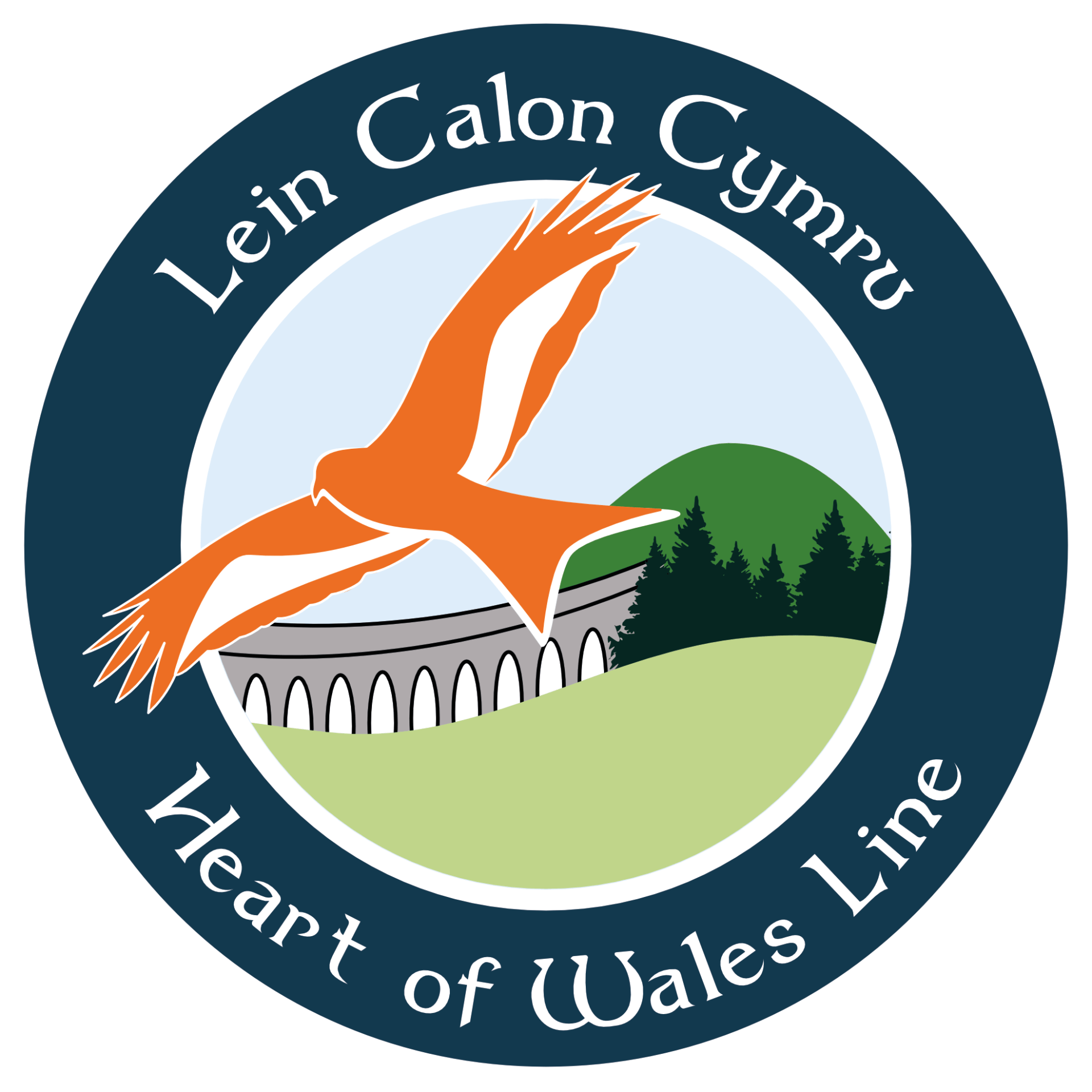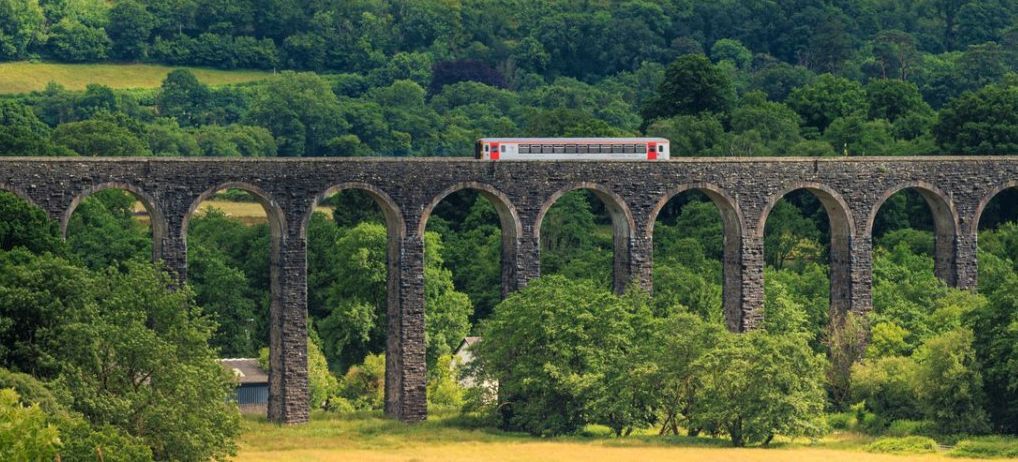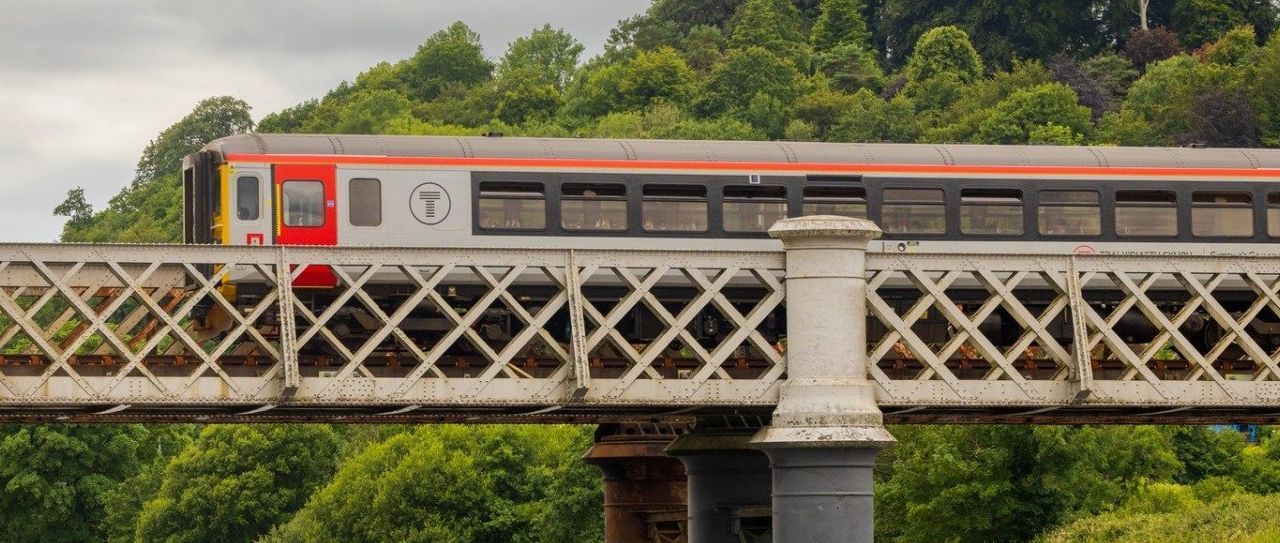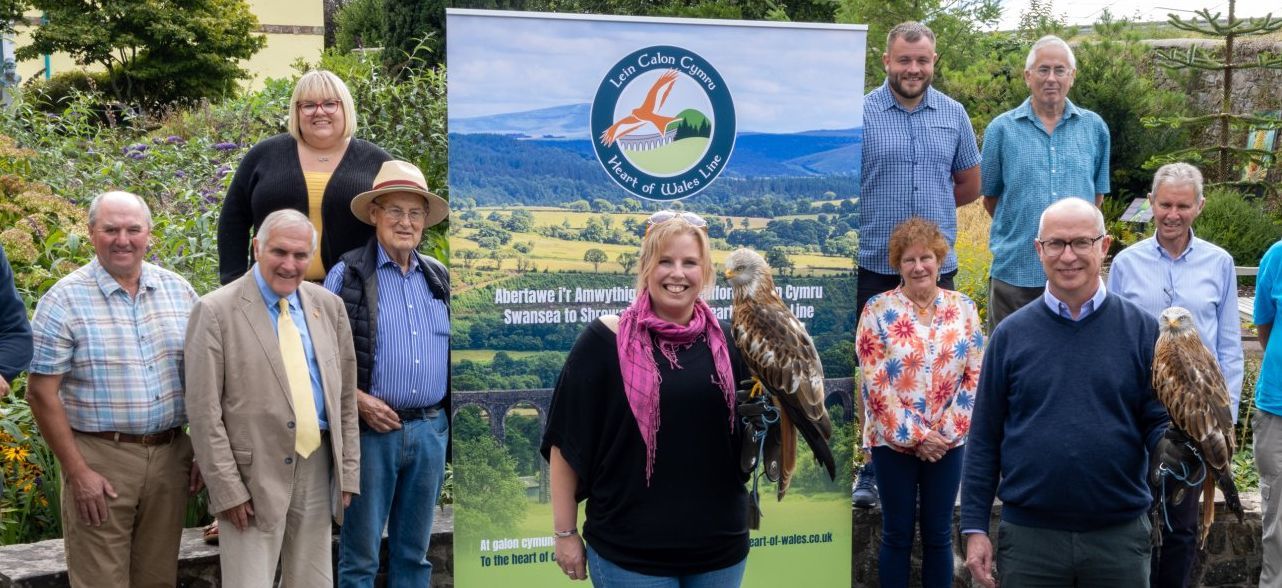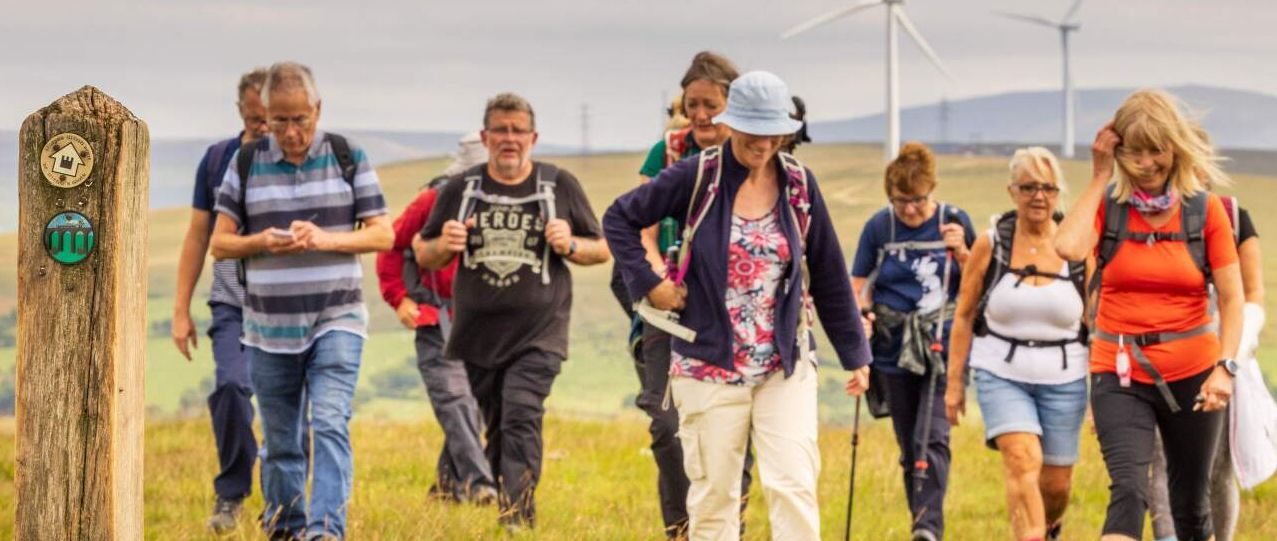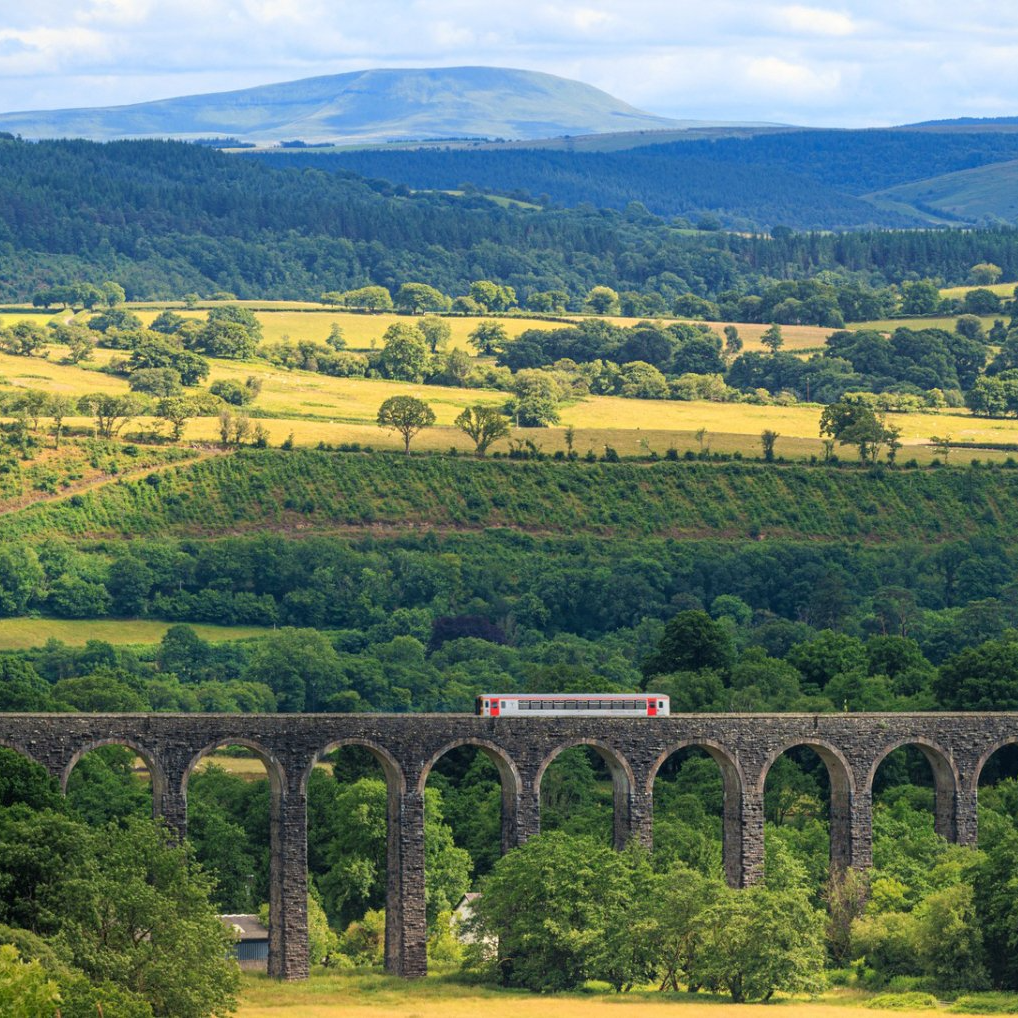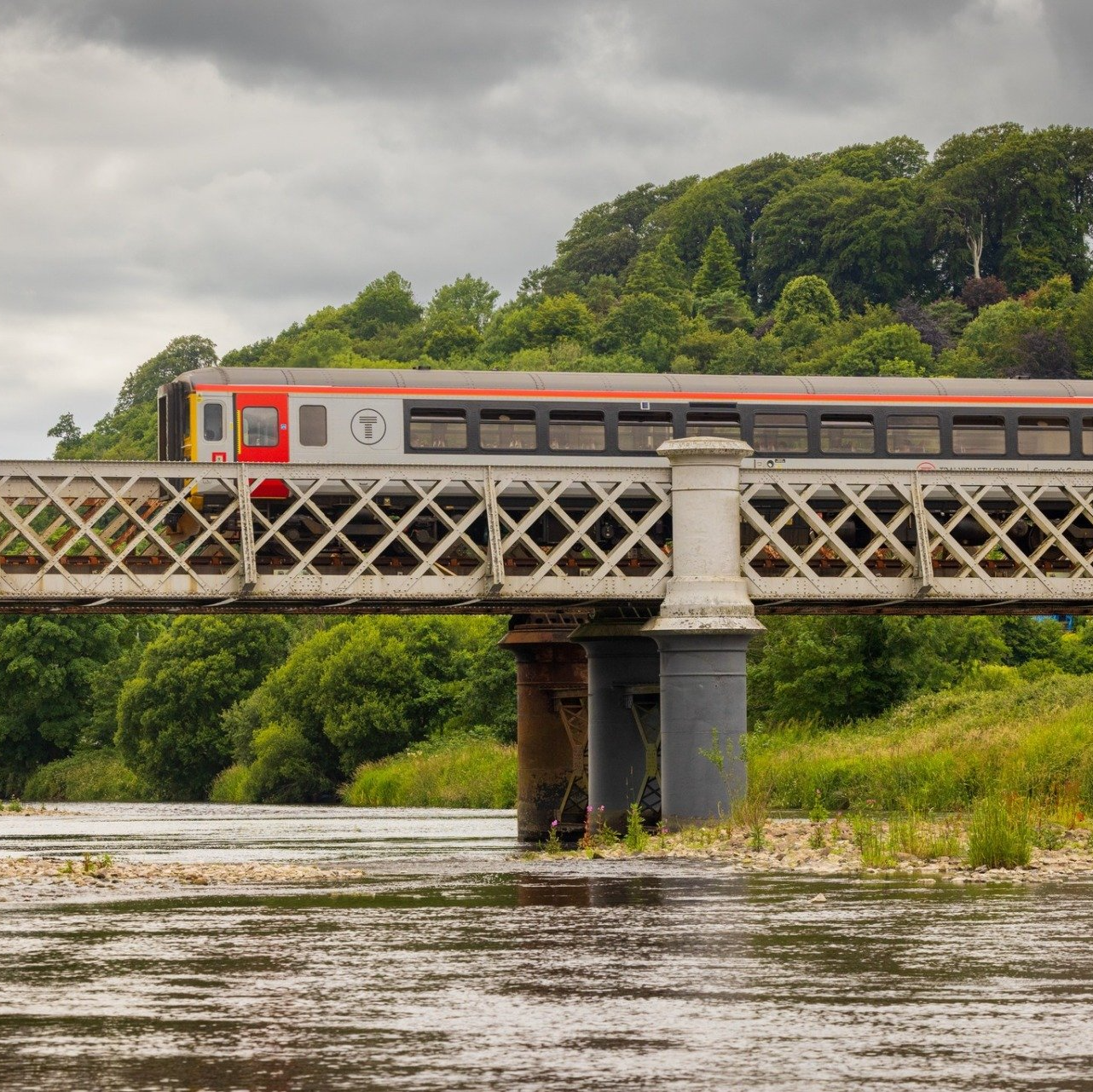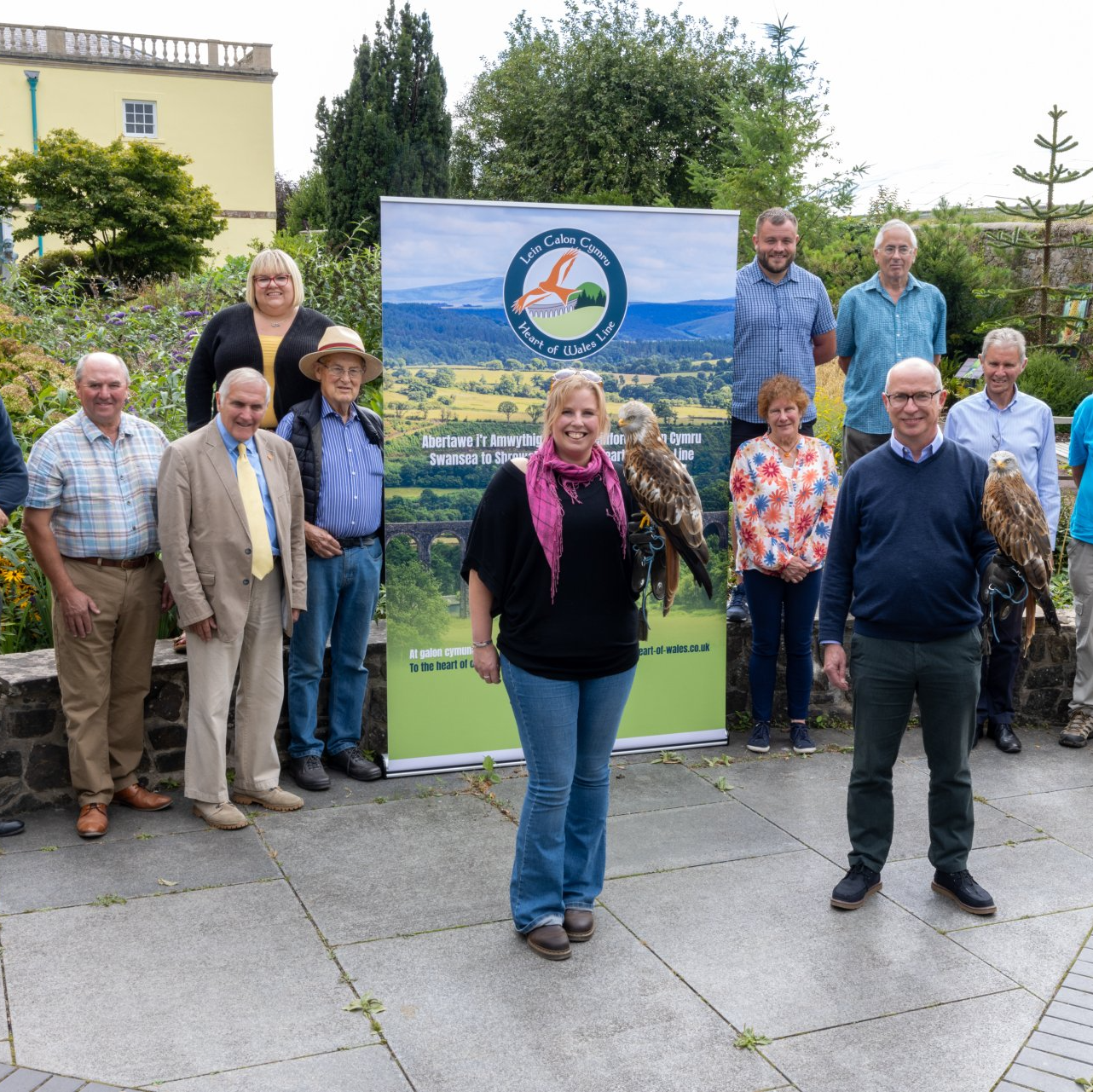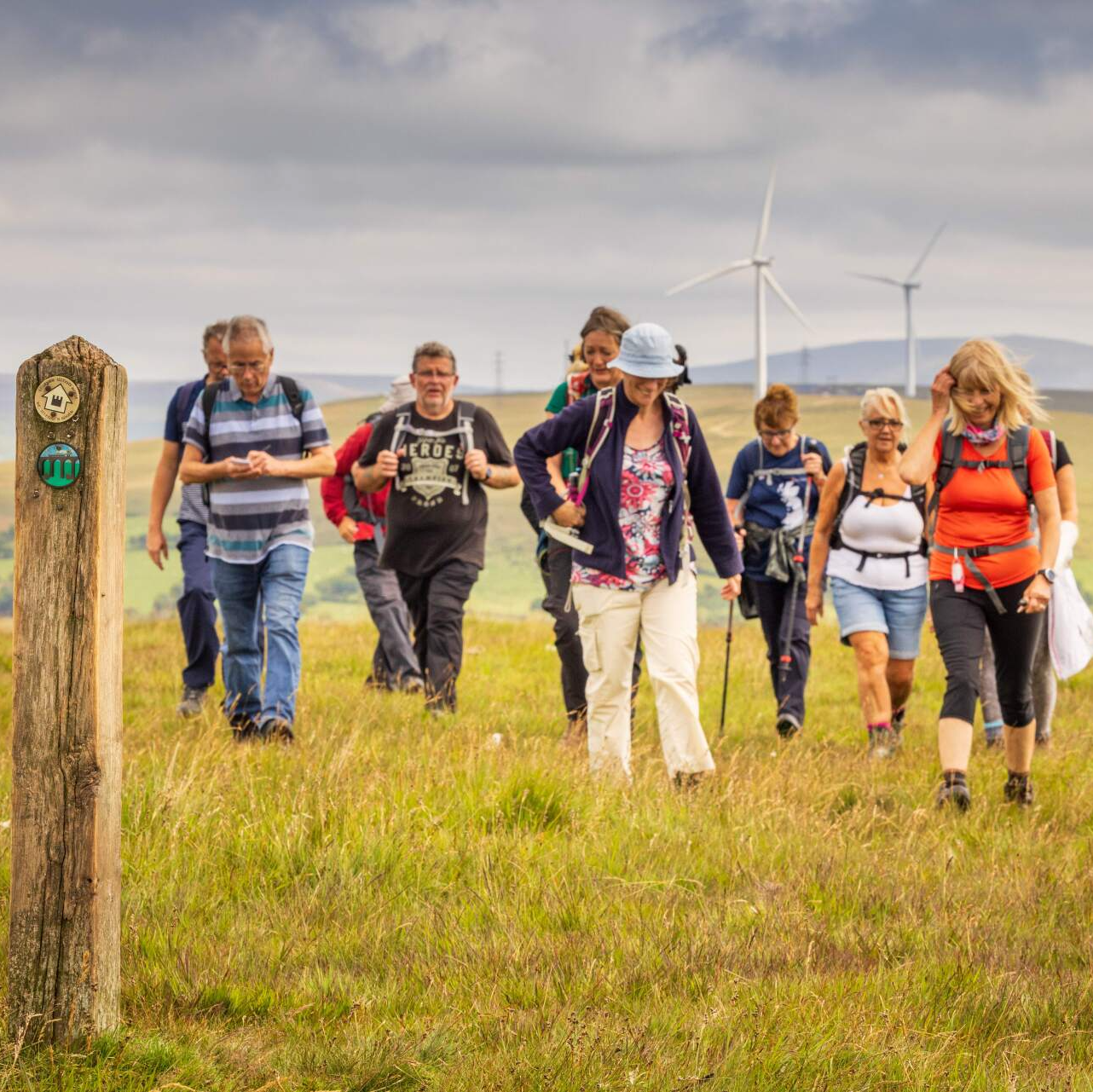
Llandovery Railway Station
Short Circular Walk
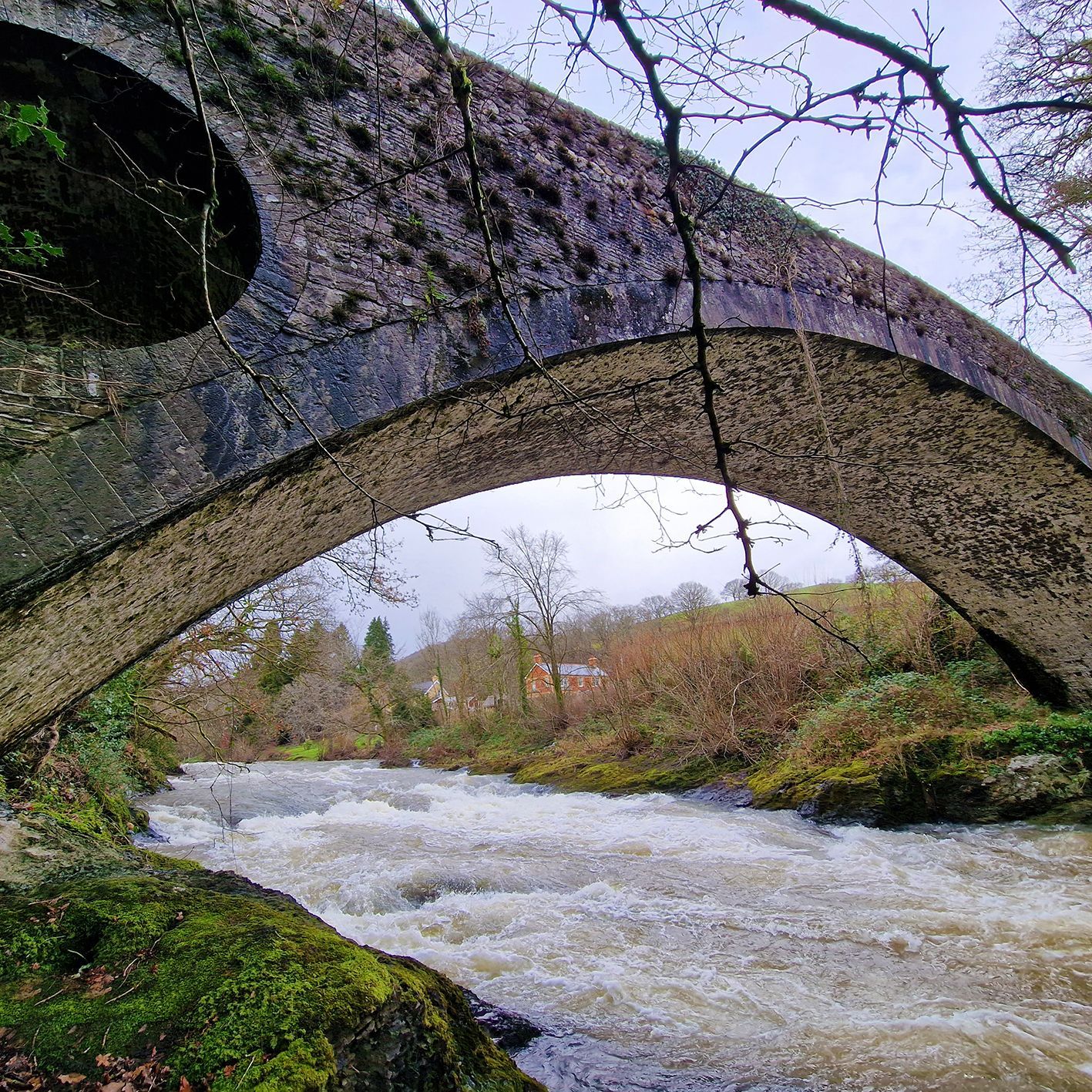
| WALK | |
|---|---|
| Distance | 5.7km | 3.5 miles |
| Terrain | Pavement, fields and woodland |
| Difficulty | Mostly flat, two hills, stiles |
| Warnings | One railway crossing, crossing A roads, potential for cattle, sheep, horses in field |
Overview
This gentle walk takes you alongside the River Towy to Dolauhirion Bridge before heading through fields and woodland, across the railway line and up to Llanfair Church before heading back into the town.
Description
On leaving Llandovery Station, cross of the level crossing and head along the pavement of the A40 on the right-hand side of the road. Just before the ‘chain bridge’ as it’s known, you will see a footpath sign pointing right. You will also see a ‘viaduct’ signs for The Heart of Wales Line Trail here, and elsewhere along the walk. Go through the gate and follow the path to the next gate. Go through it and continue straight, through the fields, keeping the boundary on your right, until the fields narrow and you come to a brick wall. Following this round as it curves right and go through the gate at the end, under the trees.
Keep the field boundary on your left and head for the next gate ahead. You will start to see the building of the Tonn Estate on the left. Go through the gate and field until you come to a gate onto a tarmac lane. Cross over the lane and through the gate opposite into a field. Follow the boundary to the left until you come to a kissing gate. This takes you across a wooden footbridge. Turn left at the end and along a path to the right of the stone bridge. Follow this path through the trees until you come to a gate. Go through it into the field. Turn left and follow the field boundary on your left and walk along the banks of the Towy River which is now on your left, until you come to another gate. Go through it and then follow the path along the riverbank through 2 more gates and large fields until you eventually come to the Grade 1 listed Dolauhirion Bridge.
Go over the stile and onto the bridge for a look at the river. Head right off the bridge to the main road, the B4344. Turn left and stop beneath the brown road sign to ‘Twm Sion Cati’s Cave’. If you look across the road you will see a gap and gate in the hedge. Go through this, cross the track and over the stile into the field. Head directly uphill to the corner of the field where you will find the next stile into the woods. Once over, turn right and head through the next gate/stile into this lovely oak woodland which lead to more fields ahead. In the first field, turn right and follow the boundary to a stile and gate.
Go over into the next field and follow the left boundary until you come to a wooden bridge on the left, into the woods. Cross over this, turn right and cross the next wooden footbridge beyond. Walk along the woodland path, including a couple of boardwalks, with the boundary on your right. Eventually you will come to a stile where you cross over into a clearing. Head over to your left onto the track then immediately over a stile on your left, into a field.
If you look up you’ll see the church tower of St Mary’s Llanfair. Head towards the right corner of this field – the stile sits below the church tower. Go over the stile, across the field and over the next stile ahead of you. From here you climb the steps to the railway line. Stand well back if a train is coming, until it has passed. Cross safely and quickly if you cannot see or hear a train – they travel from both directions. DO NOT LINGER OR TAKE PHOTOS AS YOU CROSS. (LINK HERE TO FIND OUT ABOUT HOW TO STAY SAFE ON THE RAILWAY?)
Go down the steps then over two more stiles in the woods. Once you’re in the field, look up towards the church and look for the gate/stile to the right of it. Head up the field and cross over onto the road by the church. If you have time to look around, it’s worth it. Otherwise turn right and head down the residential lane to the main A483. Cross over when you reach the road where you’ll see a footpath to the right of the gate, along the side of the house. Head along this path which leads you to a nice park with a playground. Stay on the path which takes you into the Maesglas housing estate. Walk a short distance to the road and turn left.
Follow the road as it curves right and soon you will see a footpath sign down a narrow alleyway on the left, after house number 38. Head along the alley and follow the path at the end as it turns right. Keep on this path with the river Bran on your left as it heads along the backs of the houses. Keep going through the gate ahead as the path narrows. When the path ends, you’ll find yourself at the road bridge of the A40 that runs through the town. Head right along the pavement towards town.
Turn first left on Waterloo Street by the red Neuadd Goffa Rhys Pritchard Memorial Hall. Head to the Grade 2 listed Waterloo Bridge to see the convergence of the Rivers Bran and Gwydderig on the left. On the right before the bridge there are fence panels and a path leading down some steps. Head down and walk along the river until you come to Llandovery Castle ruins and the gleaming stainless steel statue of Llywelyn ap Gruffydd Fychan ** in the town car park.
From here you can visit Llandovery Town with its Visitors Centre, pubs, shops and cafes before heading back to the station along the A40, heading west. You’ll pass the Grade 2 listed Llandovery College on your right before you get there.
** Information box – Llandovery castle and the Staute of Llywelyn Ap Gruffydd Fychan.
The first motte and bailey castle was built by Norman invaders between 1100 and 1116. By 1162 it was in the hands of Rhys Gruffydd, Lord of Deheubarth. Llandovery Castle eventually fell to the English in 1277 who retained it until 1490 after which it fell into disrepair.
During Owain Glyndwr’s War of Liberation (1409- 1416) Henry IV led a huge army to Llandovery in search of Glyndwr. Llywelyn Gruffydd Fychan of Caeo, a landowner and supporter of Glyndwr, was publicly hung drawn and quartered for refusing to betray the Prince. The statue created by Toby and Gideon Petersen commemorates his sacrifice and was unveiled in 2001.
